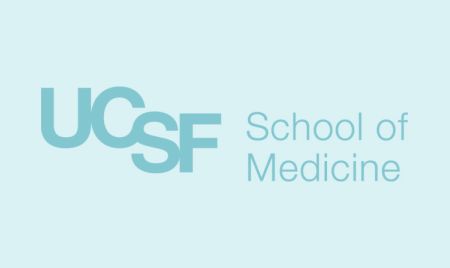Finding Creative Ways to Incorporate High-Risk Research Into the Clinical Practice at UCSF

Graduate students Beatriz Osuna (left) and Adair Borges (right) from the Joe Bondy-Denomy lab in Mission Bay.
AME member, Manish Aghi, MD, PhD, MAS captures highlights from the 2019 SOM Leadership Retreat entitled “Bridging the Gap: From Curiosity to Cure at UCSF.” This year’s retreat focused on the importance of UCSF supporting high-risk, curiosity-driven research and how we can best ensure that the results of such research are creatively incorporated into the clinical enterprise at UCSF.
Each January, the Dean of the School of Medicine (SOM) convenes a Leadership Retreat and invites the school’s leaders to discuss a timely topic that has implications for the School and the University at large. The 2019 SOM Leadership Retreat entitled “Bridging the Gap: From Curiosity to Cure at UCSF” focused on the importance of UCSF supporting high-risk, curiosity-driven research and how we can best ensure that the results of such research are creatively incorporated into the clinical enterprise at UCSF.
The retreat began with a dinner in which UCSF Nobel Laureate Dr. Elizabeth Blackburn moderated a panel session with the six early career UCSF scientists who were awarded NIH Director’s Awards in October of 2018. This represented a record number of winners of this award at UCSF and each gave outstanding “elevator pitch” style summaries of their work. This was followed by questions from Dr. Blackburn about what aspects of the environment at UCSF enabled their work, as well as what they would change at UCSF to make the environment even more favorable for this type of work. Topics that came up during the discussion included the challenges of a multi-campus environment particularly when it comes to collaboration and graduate student training and the importance of developing a diverse scientific workforce.
The full day Friday session was introduced by Dean Talmadge E. King, Jr., MD, followed by a session moderated by Executive Vice Dean Catherine Lucey, MD, entitled “Spotlight: Discovery to Cure” in which 15 UCSF researchers across a variety of specialties gave five-minute overviews of their work. The audience then convened at their tables to discuss the talks and highlight key take home points about strengths of the environment at UCSF for enabling these scientists to thrive and things we can do to continue supporting this work. The session concluded with each table mentioning one key suggestion that emerged from their brainstorming, the highlights of which included the suggestion of having a Chief Scientific Officer at UCSF who oversees the scientific enterprise to ensure its seamless integration across the sciences and with the clinical enterprise.
After lunch, a session on Game Changers highlighted the work of Jennifer Doudna, David Julius, PhD; and Peter Walter, PhD along with a question and answer session moderated by David Morgan, PhD, Vice Dean for Research, and Jeremy Reiter, MD, PhD, Chair of the Department of Biochemistry and Biophysics. A theme that emerged from this session is how important it is for scientists to be able to pursue curiosity driven research and be in an environment like UCSF that supports this.
A session entitled “Bridging Discovery to the Finish Line” was moderated by Barry Selick, PhD and featured Jeffrey Bluestone, PhD; Joe DeRisi, PhD; Tejal Desai, PhD; and Donald Ganem, MD talking about the mechanisms by which UCSF scientists can engage with industry. This was followed by the audience breaking into small groups to tackle specific questions, such as ways we can foster collaboration, how we can support physician-scientists, and how to handle the challenges of recruiting scientists to clinical departments.
Highlighted suggestions include:
- Supporting joint recruitments.
- Making faculty web profiles with a visible link to polished videos in which the faculty members give four minute overviews of their work.
- Having a system by which individual faculty could receive personalized notifications of work being done by UCSF scientists who could be potential collaborators.
- Considering mechanisms to expand the number of graduate students at UCSF to keep pace with the growing number of talented scientists at UCSF.
The day wrapped up with the reactions of leadership, with Michael Gropper, MD, PhD asking questions of Dean King, Chancellor Hawgood, and Elizabeth Blackburn, each of whom found the retreat to be a remarkable celebration of the great science at UCSF and appreciated of the suggestions that emerged. Indeed, in addition to learning about wonderful science at UCSF to which they had previously not been exposed, the retreat participants, who represented a wide range of experience and perspective, engaged in interactive and meaningful discussions that led to numerous suggestions.
As has been the case with each of the previous Leadership Retreats, all expect that these suggestions will lead to substantive changes at UCSF. The changes emerging from this year’s retreat will undoubtedly strengthen the connections between the basic science and clinical departments at UCSF. As AME members in particular, we hope that this year’s retreat will facilitate greater opportunities for cross-education of clinical trainees in the core scientific advances at UCSF and scientific trainees in the frontiers of clinical medicine practiced at UCSF.









